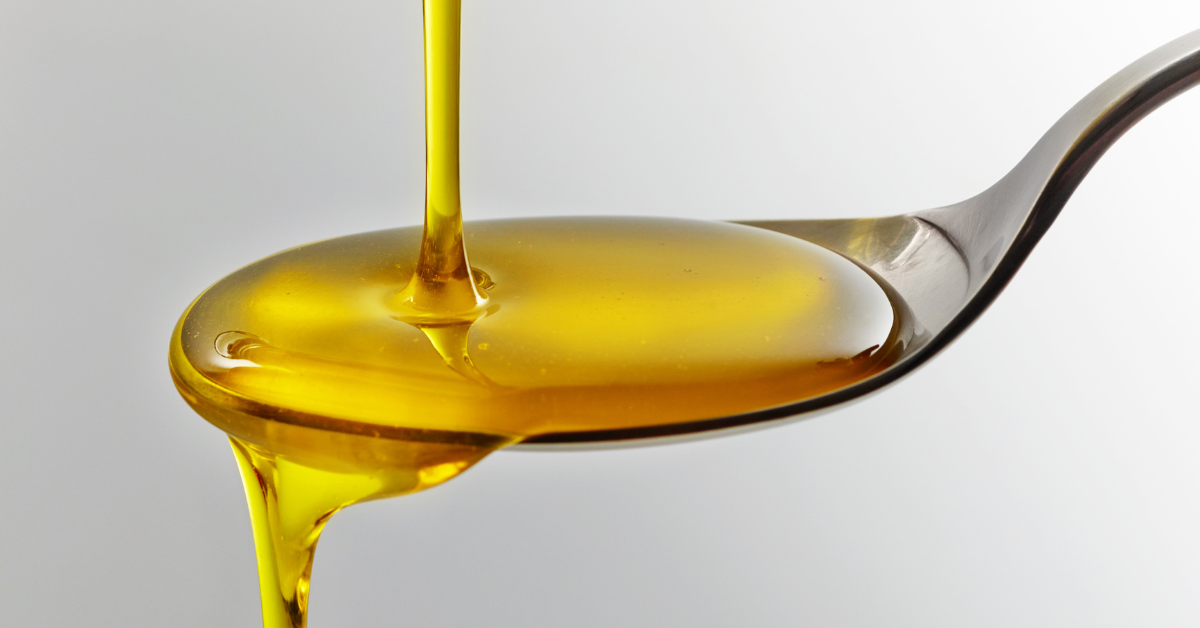
This Food for Thought seminar is provided by an independent expert and does not represent the views of the Food Standards Agency.
This talk from Professor Johnathan Napier covers his extensive research in plant biotechnology. He is a leading pioneer in the area of work and an advocate for the power of genetically modified (GM) plants for the public good.
The FSA plays an important part in public engagement for new technologies, and their potential impact as it is responsible for assessing food safety consequences. The FSA is also involved in understanding emerging risks and opportunities, and their impact on the UK food system. Hence, it is important to engage with leading research in the field to understand the potential impacts of GM on the UK food system, both positive and negative.
In this seminar, Professor Napier discusses Omega 3 long chain polyunsaturated fatty acids (omega-3 LC-PUFAs) and omega 3 fish oils. These are a limited natural resource and fish stocks are coming under increasing pressure. Omega-3 LC-PUFAs are important nutrients for human consumption and also play an important role in aquaculture, but there is no known plant source for them.
As Professor Napier shares, his research “has been evaluating the production of omega-3 long chain polyunsaturated fatty acids (omega-3 LC-PUFAs, generically known as omega-3 fish oils) to provide a sustainable source of these important nutrients, with a specific goal of producing these health-beneficial fatty acids to reduce our dependence on marine sources.
“Attempts to engineer plants with the primary algal biosynthetic pathway for LC-PUFAs has been successfully carried out in a range of species and leading to the production of a transgenic oilseed crop (Camelina sativa) which contains over 30% omega-3 LC-PUFAs in its seed oil. We have carried out field trials in Europe and N. America and also evaluated the use of GM Camelina seed oil as a replacement for fish oil in aquafeed diets, observing effective substitution in feeds for salmon and sea bream.
“Collectively, these data confirm the original potential of using transgenic plants to make omega-3 fish oils. However, many challenges beyond the laboratory remain to ensure this innovation delivers for the public good.”
Creu olewau pysgod omega-3 mewn Camelina GM
Dydy'r seminar ‘Food for Thought’ hon o reidrwydd yn cynrychioli barn yr Asiantaeth Safonau Bwyd (ASB).
Mae'r sgwrs hon gan yr Athro Johnathan Napier yn ymdrin â'i ymchwil helaeth mewn biotechnoleg planhigion. Mae'n arloeswr blaenllaw yn y maes gwaith hwn ac yn bencampwr dros bŵer planhigion a addaswyd yn enetig (GM) er budd y cyhoedd.
Mae'r ASB yn chwarae rhan bwysig wrth reoleiddio technolegau newydd a’u heffaith bosibl, gan ei bod yn gyfrifol am asesu'r canlyniadau diogelwch bwyd. Mae'r ASB hefyd yn ymwneud â deall risgiau a chyfleoedd sy'n dod i'r amlwg, a'u heffaith ar system fwyd y Deyrnas Unedig (DU). Felly, mae'n bwysig cymryd sylw o ymchwil flaenllaw yn y maes i ddeall effeithiau cadarnhaol a negyddol posibl planhigion GM ar system fwyd y DU.
Yn y seminar hon, mae'r Athro Napier yn trafod asidau brasterog aml-annirlawn (polyunsaturated) cadwyn hir Omega 3 (omega-3 LC-PUFAs) ac olewau pysgod omega 3. Mae’r rhain yn adnoddau naturiol cyfyngedig ac mae stociau pysgod yn dod o dan bwysau cynyddol. Mae Omega-3 LC-PUFAs yn faetholion pwysig i'w bwyta gan bobl ac maen nhw hefyd yn chwarae rhan bwysig mewn dyframaeth, ond nid oes ffynhonnell hysbys o blanhigion ar eu cyfer.
Fel y mae'r Athro Napier yn ei ddisgrifio, mae ei ymchwil “wedi bod yn gwerthuso cynhyrchu asidau brasterog aml-annirlawn cadwyn hir omega-3 (omega-3 LC-PUFAs, a elwir yn gyffredinol yn olewau pysgod omega-3) i ddarparu ffynhonnell gynaliadwy o'r maetholion pwysig hyn, gyda nod penodol o gynhyrchu'r asidau brasterog hyn sy'n fuddiol i’n hiechyd er mwyn lleihau ein dibyniaeth ar ffynonellau morol.
“Mae ymdrechion i beiriannu planhigion gyda’r prif lwybr biosynthetig algaidd ar gyfer LC-PUFAs wedi cael eu cyflawni’n llwyddiannus mewn ystod o rywogaethau ac wedi arwain at gynhyrchu cnwd had olew trawsenynnol (transgenic) (Camelina sativa) sy’n cynnwys dros 30% o LC-PUFAs omega-3 yn ei olew hadau. Rydym ni wedi cynnal treialon maes yn Ewrop ac yng Ngogledd America a hefyd wedi gwerthuso'r defnydd o olew hadau GM Camelina yn lle olew pysgod mewn deietau bwyd pysgod fferm, gan arsylwi amnewidiad effeithiol mewn bwyd anifeiliaid ar gyfer eog a merfog môr.
“Gyda’i gilydd, mae’r data hyn yn cadarnhau potensial gwreiddiol defnyddio planhigion trawsenynnol i greu olewau pysgod omega-3. Ond, mae dal llawer o heriau y tu hwnt i'r labordy i sicrhau bod yr arloesi yma yn cyflawni er budd y cyhoedd. "
Leave a comment